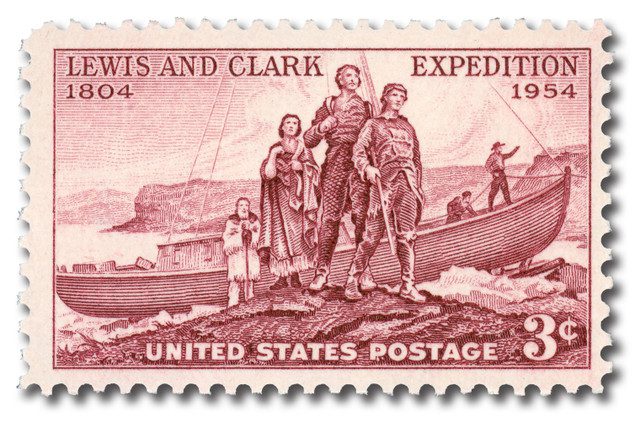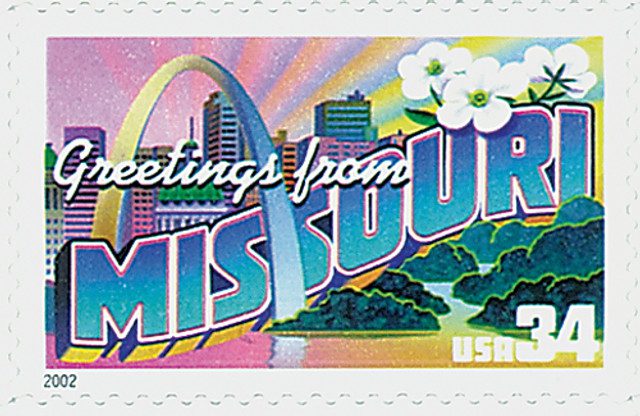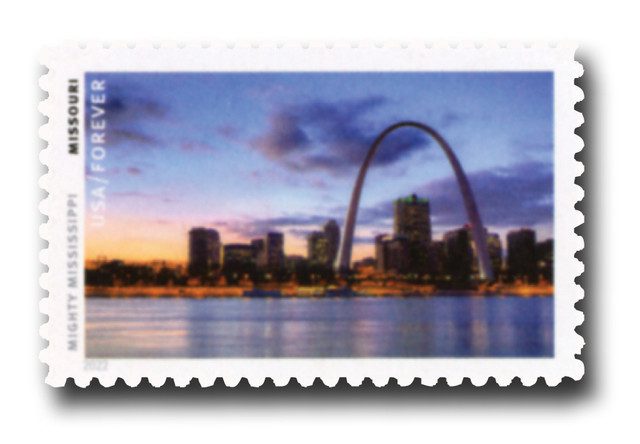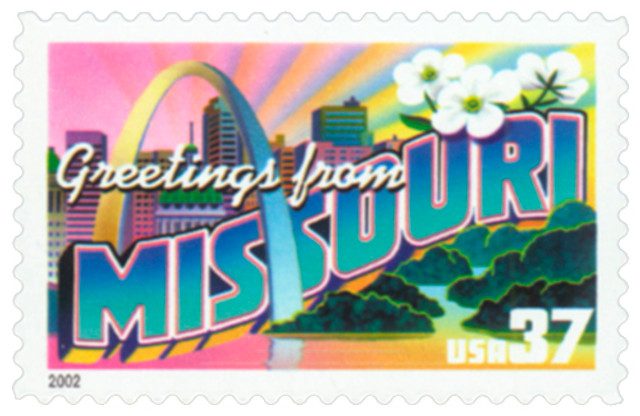On June 10, 1967, the Gateway Arch opened in St. Louis, Missouri.
In 1933, St. Louis civic leader Luther Ely Smith returned from a visit to the George Rogers National Historical Park in Indiana. He believed a similar memorial could be built in St. Louis to help revive the city’s riverfront and improve the economy. He presented the idea to the mayor, who in turn shared it with city leaders.
Before year’s end, the group founded the Jefferson National Expansion Memorial Association, with the goal of creating, “A suitable and permanent public memorial to the men who made possible the western territorial expansion of the United States, particularly President Jefferson, his aides Livingston and Monroe, the great explorers, Lewis and Clark, and the hardy hunters, trappers, frontiersmen and pioneers who contributed to the territorial expansion and development of these United States, and thereby to bring before the public of this and future generations the history of our development and induce familiarity with the patriotic accomplishments of these great builders of our country.”
The association believed the monument would cost about $30 million and asked the government for three-quarters of the money ($22.5 million). While many locals didn’t like the idea of using public funds for the memorial, it was expected to create 5,000 jobs for three or four years, which would help the Depression-era economy. After several months of negotiations within the government, President Franklin Roosevelt signed the bill approving the monument on June 15, 1934.
The following year, the memorial received funding from two New Deal Agencies – the Public Works Administration and the Works Progress Administration. Additionally, the National Park Service signed on to manage the memorial. In December 1935, President Roosevelt signed an executive order approving the memorial and its 82-acre area as the first National Historic Site. In the following years, they acquired the land and demolished old buildings. All the while they faced opposition, but the project continued.
In 1945, an architectural competition was announced to determine the design of the memorial. Smith believed the structure should be “transcending in spiritual and aesthetic values,” and should be a single feature such as a shaft, building, or arch. Among the entrants was architect Eero Saarinen. His initial design was an arch that stood 509 feet tall and 592 feet wide. He passed the first round of the competition, with notes on his design including, “relevant, beautiful, perhaps inspired would be the right word” and “an abstract form peculiarly happy in its symbolism.” Before the next round, he changed his design to reach 630 feet and said that the arch symbolized, “the gateway to west, the national expansion, and whatnot.”

In February 1948, the memorial commission unanimously selected Saarinen’s design. Public opinion varied, with the New York Times calling it “a modern monument, fitting, beautiful and impressive.” Local critics said it resembled a “stupendous hairpin and a stainless steel hitching post.”
The project was slowed for several years because a railroad passed too close to the monument, and it had to be moved. But ground was finally broken in 1959, and construction on the arch began on February 12, 1963. Though they hoped to have the arch completed for the St. Louis bicentennial in the fall of 1964, the project was repeatedly stalled due to safety checks, funding issues, and legal disputes. Construction finally finished on October 28, 1965. A time capsule with the signatures of 762,000 students was placed in the keystone before it was set. And as the arch was completed, Vice President Hubert Humphrey watched from a helicopter.

The Gateway Arch officially opened to the public on June 10, 1967. The dedication ceremony was held the following May 25, with Humphrey again present. He claimed the arch was “a soaring curve in the sky that links the rich heritage of yesterday with the richer future of tomorrow.” The arch cost much less than initial projections, just $15 million. While it only required about 100 workers, it revitalized the riverfront, creating more lasting jobs at a new sports stadium, hotel, parking garages, and apartment complex.
The Arch has foundations set 60 feet into the ground, and is built to withstand earthquakes and high winds. Each leg is an equal-sided triangle with 54-foot sides at ground level, tapering to 17 feet at the top. The legs have double walls of steel three feet apart at the ground and closer higher up. A forty-passenger tram made up of eight 5-passenger capsules operates in both legs. The trams were built on a combination of the principles of the elevator and the Ferris wheel. The ride to the top takes four minutes. At 630 feet high, the Arch is 75 feet taller than the Washington Monument and more than twice as tall as the Statue of Liberty.
| FREE printable This Day in History album pages Download a PDF of today’s article. Get a binder or other supplies to create your This Day in History album. |
Discover what else happened on This Day in History.








I rode the trans some 25 years ago, little scary for me.
Great article! I learned a lot. I initially thought it went across the Mississippi River; not so. I finally spotted it from the air when looking along the shoreline.
Building thee monument was quite a feat. They did bring in some native Americans from western states who were used to working from great heights.
I understand that the Arch was manufactured in Warren Pennsylvania and shipped to St. Louis……can you shed some light on this for me. I lived in Warren for twenty five years, Ralph Heid
My Father helped build it. RIP